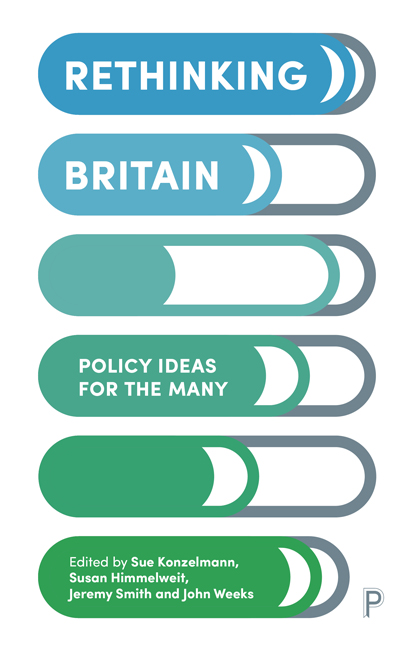Book contents
- Frontmatter
- Contents
- List of Tables and Figures
- The Contributors
- Foreword
- Introduction
- Interlude: ‘Mirror, Mirror, On the Wall – Who has the Highest Debt of All?’
- Part One Building a Full-Employment Economy: Introduction
- Part Two Public Investment – Prioritising Society Rather than Profit: Introduction
- Part Three Making Finance Work for Society: Introduction
- Part Four Genuine Social Security: Introduction
- Part Five How to provide for Social Needs: Introduction
- Conclusion
- Jargon Busters
- References and Further Reading
- Index
7 - Why Should the Railway be Renationalised?
Published online by Cambridge University Press: 11 March 2021
- Frontmatter
- Contents
- List of Tables and Figures
- The Contributors
- Foreword
- Introduction
- Interlude: ‘Mirror, Mirror, On the Wall – Who has the Highest Debt of All?’
- Part One Building a Full-Employment Economy: Introduction
- Part Two Public Investment – Prioritising Society Rather than Profit: Introduction
- Part Three Making Finance Work for Society: Introduction
- Part Four Genuine Social Security: Introduction
- Part Five How to provide for Social Needs: Introduction
- Conclusion
- Jargon Busters
- References and Further Reading
- Index
Summary
What's the issue?
Privatising railways has failed to deliver the promised better value, capital investment or reductions in public subsidies. However, successive reforms have neither renationalised the rail network nor addressed the problem of financing infrastructure – even with broad public support for change.
What's the case for railway renationalisation? And how should it be financed?
Analysis
Rail privatisation has failed on two levels. One is the well-known problem of higher costs, fares, public subsidies and grants. The other is the refusal of successive reforms to consider solutions outside the private sector to solve the problem. Much of the argument for continuing the status quo is the assumption that any failure was due to poor implementation, such as excessive fragmentation, the separation of infrastructure from operations, the rushed implementation of the franchise system and regulatory failure.
A better explanation is that privatisation is highly political. The type of privatisation that reversed over 150 years of railway consolidation was driven by political ideology and maintained by vested interests. Successive rail reforms had similar motivation, keeping the fragmented rail system in place. Vested interests include train operating companies (TOCs), rolling stock companies (ROSCOs) and thousands of railway maintenance and infrastructure companies in the subcontracting chain, all of which rely on and help justify the existing structure – for private gain.
Successive governments have also supported the privatised system. Not only have they failed to prioritise capital funding for rail and public transport, but the actual cost of railway infrastructure has also been hidden by keeping it off the government's balance sheet – first, through subsidies to TOCs to pay for track access charges, and then, through increased borrowing by Network Rail to compensate for reduced track access charges. The result has been a vast increase in Network Rail's debt – from £6.3 billion in 2002, to £46.3 billion in 2016 – with £1.7 billion in interest payments alone.
The case for rail renationalisation therefore includes savings from reintegration, as well as improved performance monitoring and more efficient financing of infrastructure.
- Type
- Chapter
- Information
- Rethinking BritainPolicy Ideas for the Many, pp. 89 - 92Publisher: Bristol University PressPrint publication year: 2019



